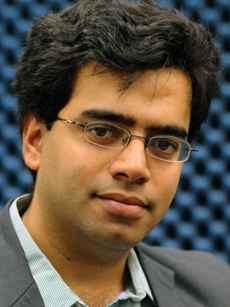
Harish Krishnaswamy, associate professor of electrical engineering, Columbia University
A team of Columbia University researchers believes that enabling reliable and efficient full duplex wireless communication is a task best addressed at the chip level. The researchers, led by Harish Krishnaswamy, an associate professor of electrical engineering, have developed full-duplex radio integrated circuits that can be implemented in nanoscale CMOS to enable simultaneous transmission and reception on the same frequency. "Having a transmitter and receiver use the same frequency offers the potential to immediately double network data capacity," Krishnaswamy says. "Our work is the first to demonstrate an IC that can receive and transmit simultaneously," he says. CMOS is the dominant technology used for radio ICs inside phones and other radio-equipped mobile devices. The biggest challenge the team faced during its research was canceling transmitter echo, a phenomenon that makes usable full duplex impossible. "What you really need to do is to cancel-out that echo to the point where it's eliminated almost perfectly and the residual echo is extremely small - smaller than the received signal, the desired signal - that you're trying to receive from the distant cell tower," he says. Since the echo is over a billion times more powerful than...

